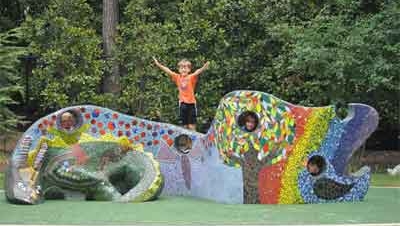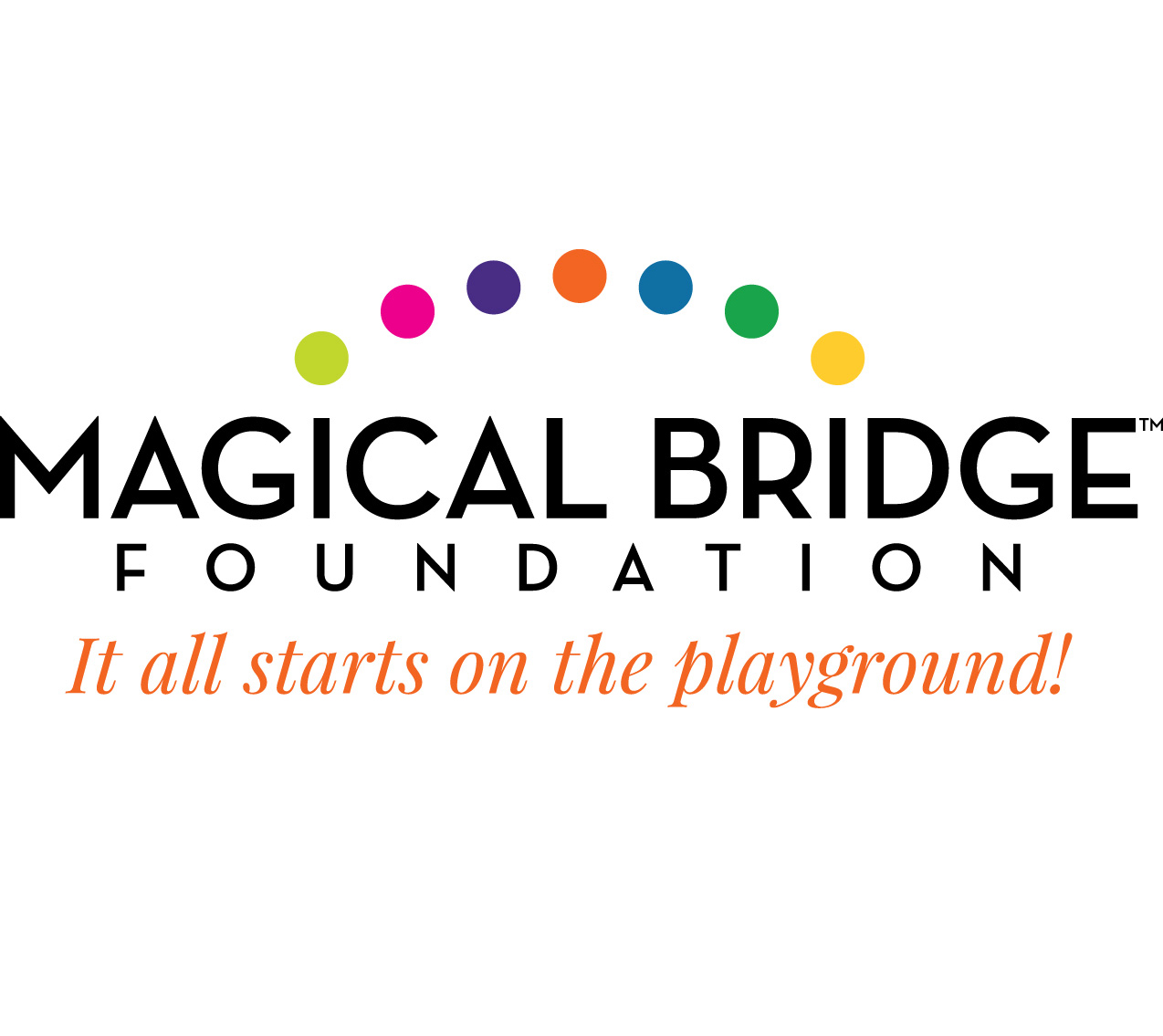FreeDigitalPhotos - “Wheelchair” by ponsulak
The National Recreation and Park Association (NRPA) maintains more than 20 networks for interaction between the more than 44,000 members of NRPA. Those members include professionals tasked with playground design, planning, maintenance, and development. One of the networks is dedicated to that group, and is called the CPSI and Playground Safety Community. Posts here by members range from simple questions such as how often a playground surface is inspected to complex questions about some of the new types of playground equipment on the market.
In mid-December 2014 a series of posts regarding the ADA and playgrounds began. The ADA is a popular topic on all of the NRPA networks, for several reasons. First, the ADA applies to all aspects of parks and recreation. Second, the design requirements are relatively new, having just become effective in 2012. Third, the ADA requirements can be vague.
John McGovern is an active member of NRPA. Known as one of the leading experts regarding the ADA, he read the string of posts and wrote a long reply to the network. That December 9, 2014 post is included here for your reference. It is written in first-person, and has been edited for clarity.
***************************************
Hi all
It has been interesting to see the replies to this post. The ADA, because it is vague in some areas, does generate a lot of questions. Many of the follow up replies were good, but also generated a question or two themselves.
This will be a relatively long post that addresses the questions started by Leo Trujillo and ended by John Atkinson. John seemed to have the most angst in his post so I called him yesterday and shared the information I'll include below.
I'll cover the rules that apply to playgrounds in general, then discuss how to treat new local government playgrounds and existing local government playgrounds, then discuss how to treat privately owned new playgrounds and existing playgrounds, then discuss applicability to private schools, church playgrounds, and HOA playgrounds, then discuss grandfathering, and close with some smart practices suggestions.
To give this post some context, our firm is the NRPA preferred provider of access and inclusion consulting. Agencies that use us for access or inclusion receive a 10% discount if they have staff or citizens who are members of NRPA.
Our firm, since we were formed in 2008, has served more than 150 states, counties, cities, and special purpose park districts. We have also worked with two branches of the military, and dozens of business and nonprofits.
Our experience, and my background, is unusual if not unique. It includes:
- I have 33 years of successful career experience in parks and recreation, always responsible for the coordination of local government services for people with disabilities
- Our six person staff has great credentials and experience, including two certified ADA Coordinators, one Texas Registered Accessibility Specialist, one CPSI, and one attorney licensed in Illinois
- Our work for local governments facing an ADA complaint has been accepted by two federal district courts, US Department of Justice (DOJ), US Department of Interior (DOI), and three state access enforcement agencies
- Pursuing my interest in civil rights, while working in parks and recreation I earned a law degree in night school from Loyola University of Chicago School of Law in 1987
- As an active member of NRPA, I have coordinated every response by NRPA to federal rulemaking regarding the ADA
- I am one of only three people to serve on each of the three federal advisory committees at the US Access Board regarding the development of the recreation elements of the 2010 Standards, and, representing NRPA, I was selected to chair the first recreation federal advisory committee
- I also represented NRPA on the regulatory negotiation committee that developed the play area guidelines
- At their request, I trained US DOJ enforcement staff regarding the application of the ADA to public parks and recreation, emphasizing playgrounds among other areas
Our detailed and pragmatic approach to access is hailed by our local government clients and competitors alike. Towards that end, what I am happy to share with the CPSI and Playground Safety community is exactly the type of information we share with our client state and local governments, nonprofits, and businesses.
Access Rules in General
The Americans with Disabilities Act (ADA) became effective for states, local governments, businesses, and nonprofits on January 26, 1992. The ADA is the first federal civil rights law that applies whether an entity has received federal funds or not. The ADA rightfully so dominates this discussion.
The ADA requires states, local governments, businesses, and nonprofits to adhere to the most current design standard published by US DOJ. The standard in effect from 1992 to 2012 was known as ADAAG, or the 1991 Standard. (There was another standard too, UFAS, and it was primarily used by federal agencies. It can no longer be used by local governments today and therefore it is ignored here.) The 1991 Standard adequately address elements in typical built environments, but did not address playgrounds, fitness, sports fields, golf, aquatics, or other recreation spaces.
In 2004, after 11 years of research, public participation, and careful study, the US Access Board published the 2004 ADA/ABA Guidelines. In the title, the ADA refers of course to the Americans with Disabilities Act (ADA). The ABA refers to the 1968 Architectural Barriers Act (ABA), which applies to sites and facilities funded or operated by federal agencies. The 2004 ADA/ABA Guideline is important because it for the first time provides both scoping and technical requirements for playgrounds and many other (but not all) types of recreation and park environments.
In 2010, the US Department of Justice adopted and published the aptly-named 2010 Standards for Accessible Design, which was the 2004 ADA/ABA Guidelines with a new cover and narrative. This is appropriate; only US DOJ has this type of rulemaking authority for states, local governments, businesses, and nonprofits.
Don't forget the states, and in some situations, county or municipal ordinances. Where a state, county, or city has an access requirement that is more stringent than the 2010 Standards, it must be followed for the aspect that is more stringent. For example, were a state access code to ban engineered wood fiber (which by the way several states have considered) than that would be viewed as more stringent and your agency would have to comply with that requirement.
For those who are curious, in 2006 the General Services Administration (GSA) adopted the 2004 ADA/ABA Guidelines for their operations, such as federal employee daycare sites. In 2008 the Department of Defense (DoD) did the same, and the DoD Standard applies to all military installations, contractors, and facilities.
Treatment of State and Local Government Playgrounds (New and Existing)
All 50 states are subject to title II of the ADA. The title II regulation, last published by the US DOJ on September 14, 2010, and effective March 15, 2011, requires all 89,004 states and local governments to, in section 35.151, adhere to the 2010 Standards.
A state department of conservation in, as an example, Florida or New Mexico, when designing or constructing a new playground, must adhere to the 2010 Standards regarding these new playgrounds (new is after March 15, 2012). It must also, in grant programs to local entities, compel compliance with the 2010 Standards.
A county, city, school district, or special purpose park and recreation district such as, for example, Morris County (NJ), Las Vegas, or Deerfield Park District (IL), when designing or constructing a new playground, must adhere to the 2010 Standards regarding these new playgrounds (new is after March 15, 2012).
Regarding existing playgrounds, a state, county, city, school district, or special purpose park and recreation district is required by title II section 35.105 to evaluate its existing sites for compliance with the only playground access standard, the 2010 Standards. In our world of playgrounds, we refer to this step as an access audit. At every existing playground, a listing of access deficits is compiled and a recommended solution for each is considered.
The US DOJ has made it clear that not necessarily every existing site need be made accessible (see section 35.150(a)(1)). Therefore, integral to this process is the application of the complex "program access test for existing facilities" found at title II 35.150. The process should yield the number of agency playgrounds that will, over time, be made accessible. That retrofit work must comply with the 2010 Standards. But...how many recurring sites, such as playgrounds, must be made accessible? There is no DOJ ratio here. It is a community-by-community solution. We have worked closely with our local government clients to address this and have a very good approach to this issue. Units of state and local government must convert this work product into a 35.150(d) transition plan.
For both new and existing sites, do remember to blend in the more stringent state and local codes.
For both new and existing sites, do blend in ASTM Standards, such as F1487, F1292, and F1951, which are incorporated by reference into the 2010 Standards. Here it is interesting to note that the ASTM term "public use" has a definition that does not perfectly match the ADA title II and ADA title III definitions for playgrounds owned and operated by certain types of entities. It is unlikely this will change. It is therefore important to be aware of this difference and be able to use all three terms appropriately.
Treatment of New and Existing Playgrounds at Privately Owned Places of Public Accommodation (Businesses and Nonprofits)
There are more than 7,000,000 businesses and nonprofits that open their doors to the public and in return for cash, provide goods, services, facilities, or experiences. These privately owned places of public accommodation are subject to title III of the ADA. The title III regulation, last published by the US DOJ on September 14, 2010, and effective March 15, 2011, requires the businesses and nonprofits with playgrounds to, in section 36.401, adhere to the 2010 Standards.
There is a great variance between different entities within title III. Everything from a YMCA to a fast-food restaurant to a resort hotel may have a playground, and all are subject to the 2010 Standards.
A for-profit child care entity such as a KinderCare must, as an example, when designing or constructing a new playground, adhere to the 2010 Standards regarding these new playgrounds (new is after March 15, 2012). That very same KinderCare has an economic incentive for compliance as well. Both a tax credit (up to $5,000) and a tax deduction (up to $20,000) were created by Congress to aid businesses in compliance. Nonprofits don't benefit from this approach.
Regarding existing playgrounds at a nonprofit or business, title III section 36.304 requires the removal of barriers when doing so is "readily achievable". That is defined as "easily accomplishable and able to be carried out without much difficulty or expense". We think that a lot of work can be done that is "readily achievable". However we also believe that a complex or costly retrofit at a title III entity playground may very well fall into the definition of not readily achievable.
Of course, knowing what to remove requires first an access audit. ADA title III is silent on whether a business or nonprofit is required to have an access audit. We think by inference one must, but it is not required as it is for states and local governments.
It is critical here that the approaches for existing playgrounds be kept separate. The program access test is radically different from the readily achievable barrier removal test. Confusing them could be disastrous for your clients and your employer. Quoting Dr. Egon Spengler, "Don't cross the streams."
For both new and existing sites, do remember to blend in the more stringent state and local codes.
For both new and existing sites, do blend in ASTM Standards, such as F1487, F1292, and F1951, which are incorporated by reference into the 2010 Standards. Here it is interesting to note that the ASTM term "public use" has a definition that does not perfectly match the ADA title II and ADA title III definitions for playgrounds owned and operated by certain types of entities. It is unlikely this will change. It is therefore important to be aware of this difference and be able to use all three terms appropriately.
How Does this Apply to Playgrounds at Private Schools?
If anything here is an easy question, this one may be it. A private school with a playground is a title III entity and is subject to the 2010 Standards and title III.
How Does this Apply to Playgrounds at Churches?
Churches (and synagogues and other places of worship) are exempt from title III. However, take great caution here. Many states have a civil rights law or access code that does cover churches and other places of worship. For example, Illinois has two statutes, the Human Rights Act and the Environmental Barriers Act, and both apply to churches.
It is always better to believe an entity is covered by an access requirement, and then find out it isn't, than to believe it isn't, and then find out it is.
How Does this Apply to Playgrounds at a Homeowners Association (HOA)?
A homeowners association (HOA) is not a local government, nor is it a business or nonprofit open to the public. Therefore it is not covered by title II or title III. There is some news here and a caution as well.
First, the US Department of Housing and Urban Development (HUD) has not adopted the 2004 ADA/ABA Guidelines. HUD uses the Uniform Federal Accessibility Standards, which does not address sports fields, playgrounds, sports courts, pools, golf courses, fitness centers, and more. Why HUD continues to use old UFAS, and why HUD has a standard that does not address any recreation elements, is beyond our understanding. But it does.
Additionally, some housing may indeed be subject to title II. Local government affordable housing is clearly a “program” of local government. That means common areas such as fitness centers, playgrounds, and swimming pools, will therefore be subject to title I and the 2010 Standards.
In April of 2013 the US Department of Housing and Urban Development (HUD) and the US DOJ published a joint statement regarding accessibility and housing. There are, as you might expect, some grey areas. Perhaps the most important is that a playground at an HOA, if used only by residents and their invited guests, is likely exempt from the ADA. But if the HOA allows members of the general public to use the playground, it converts the playground into a title III entity.
Again, look for state, county, or city codes that may apply. There are some HOAs that are the size of a big suburb. It seems contradictory to have a massive exception to access requirements here. But a call to the US DOJ technical assistance line at 202/514-0301 will confirm that in general, the HOA playground need not comply with the 2010 Standards.
That does not mean it need not comply with ASTM standards.
What are the Rules for Grandfathering?
This too is simple: there is no grandfather clause in either ADA title II or ADA title III. Do not use this phrase. Don't suggest to clients that grandfathering exists.
After the evaluation, there may indeed be a state or local government playground that is not made accessible because of the program access test. Or, there may be a business or nonprofit playground that is not made accessible because doing so is not readily achievable.
Any Smart Practices or Resources in this Area?
Lean towards access. If you are in doubt, call these resources. NRPA is at 703/858-0784 and ask Caroline Smith for her help.
Our firm, Recreation Accessibility Consultants, knows the ADA and how it applies to playgrounds. Reach us at 224/293-7451 or [email protected].
The US Access Board develops all design guidelines. Questions about the technical requirements (number, width, height, etc.) can be answered at 202/272-0080. Visit their website at www.access-board.gov.
The US Department of Justice provides good technical assistance regarding policies, programs, and more. This is the place to go if you want to find out of your playground s subject to title II or title III. Visit the website at www.ada.gov or call 202/514-0301.
Find out what your own state requirements are. This is just as important as the federal requirements. Ask NRPA for more help in this area if you need it.
Conclusion
Other parts of this post asked about which surfaces are accessible and got good answers from other respondents. That question though has far from a simple answer. Please, do not forget the title II 35.133 (title III 36.211 says the same thing) maintenance requirement regarding accessible elements (not just in playgrounds but everywhere), and of course, the 2010 Standards language regarding frequent inspection and regular maintenance of playground surfaces.
And, for playground owners and operators everywhere, stop looking for simple answers regarding playgrounds and the ADA. They are few and far between. A large city system recently retained us to help them with compliance. Following our interview, the staff told us how our attitude was so different than others interviewed. The others cited ADA compliance as a challenge, but we encouraged the city staff to embrace the ADA, making it just another factor in the many things weighed by a department.
We would suggest the same to playground industry professionals…embrace access, learn, no, master the scoping and technical requirements. Learn from the successes and the failures of our colleagues.
Demand accessible surfaces from vendors. Demand accessible and usable play components from the manufacturers.
Finally, exceed the minimum Your playgrounds don’t just meet the minimum safety requirements, they exceed them. Take the same approach regarding access and you’ll see fewer articles like this are necessary.
About the author:
John N. McGovern is the President of Recreation Accessibility Consultants (RAC). He started his career in parks and recreation in 1975 in New Mexico, and moved to Illinois for work at one of the unique special recreation associations. He chose to pursue his interest in civil rights and earned a law degree at night school at Loyola University of Chicago, but continued working in public parks and recreation. In the 90’s he represented NRPA on every one of the federal advisory committees that developed the recreation guidelines and later, he chaired every effort by NRPA to respond to access and inclusion rulemaking. He left local government in 2008 to start RAC and continues to help agencies and businesses discover ways to make access easy, not complex.













How does this all apply to
How does this all apply to church schools with no public funding (we're in TX)?
THANKS
Playground ADA Accuracy
Folks - print what Mr. McGovern has posted. Study it - and most important - believe what he is writing. The guy is spot on! And no - I'm not sucking up to John, lol - we agree on most stuff - and have a variance of opinions on a few things (that are gray). There are some very simple things that can be done to increase accessibility to your play spaces...just get a few opinions - and take note - there are CPSI folks that provide "ADA consults" - just be cautious. Got a Technical question? Contact the US Access Board - [email protected]. They are awesome!!!